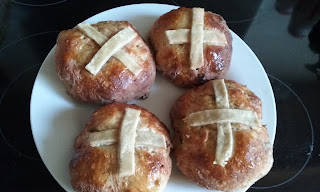Elizabeth Burns’ last collection (Lightkeepers, Wayleave Press, 2016) was
edited by her friends and fellow-poets Gerrie Fellows and Jane Routh; it puts
together the poems she wrote during the last years of her life. She didn’t have
the time to publish it but asked her friends to do it for her. A few of the poems
appeared in poetry reviews and in anthologies but most of them were unpublished
when she died of cancer in August 2015.
A new fresh voice emerges from the collection, the
reader has the sense of meeting her personally while reading her lines, they
have the authenticity that only unpublished poems sometimes have. Her capacity
of observing and perceiving reality, of making the invisible visible (as she
said speaking about women’s voice), and the ordinary relevant, is so acute,
insightful and unique that it made me experience things in new ways.
When she writes about some duck eggs (ten dozen duck
eggs she found on her doorstep one day):
.....
I love their magnitude,
their
plenty, the rows and rows of them,
the
different ways of ordering and counting them.
Their
ranks of sameness, and their slight differences.
She communicates the preciousness of the gift and
also the innate beauty of the eggs so common and special, a work of nature and
of art at the same time to admire and cherish:
.......I
want to keep them
on
this windowsill and gaze at them each day –
their
lovely shapes, the oval clear and pure,
as
if they were holy, made for ritual;
.....
and
the way they are contained and unassuming,
holding
inside themselves a freight of possibility.
A fruitful force emanates from these lines, they
don’t seem to be written by a person at the end of her life, on the contrary they
are vital, full of hope, compassion and care.
Her masterly use of enjambment in The Spool expresses the inner joy and
mutual close communion in the act of sewing up some buttons with her daughter
on the new dress the girl is going to wear in a school trip to an art gallery:
And
here she is, early in the hot June morning, light on her feet
in
her pretty shoes setting off with her camera, her sketchbook,
on
the school trip to the gallery, the art college show; threading her way
down
the street, heading out into the promise of this summer’s day.
In Clay, Plum and Lightkeepers, her last pamphlets and
collection all published by Wayleave press, her poetry definitely develops in a
deeply imaginative and free way, her poems are spare, tight and careless of
what is inessential; instead she goes to the core of things. While her body was
inevitably shrinking and her hair was falling, her poetry bloomed.
The intensity of everyday, strongly felt experiences
is, for example, in the simple act of buying a second hand dresser in an
antique shop:
a
blue-painted dresser that was old and worn
and
had six little drawers with knobs for handles,
a
dresser that would fit exactly into my kitchen
........................................
The
dresser is scratched and some of its paint
is
wearing away, but its wood glows in the evening sun
and
it holds a bowl of oranges, perhaps, or a jug of roses,
green
candles, blown eggs, tulips, herbs, postcards;
The poem Lightkeepers is about following the
traces of R.L. Stevenson in the east coast of Scotland near Edinburgh. His
presence is everywhere together with the memories of her daughters’ childhood
at the seaside. The Isle of May and Fidra lighthouses remind her of the
writer’s family and are ‘beacons in darkness’, but all the happiness she
gathered is ‘fragile as glass’ and momentary, ‘a lantern-slide lit for a
moment’. The complexity of this poem seems to be resolved in the lines: ‘We’re
lightkeepers, making ready/for sundown, revealing that tiny glimmer and
refracting it’, showing the value of ‘the gleam/that makes us human’ and its
inevitable fickleness. A sense of transience is in the last line: ‘we take that
light we can to keep us through the night.’
Going through the collection is like having a journey
in an apparently ordinary world perceptively observed and deftly written. From the
comfort of the first poem, The recovery
room (‘the tests are clear − ...the winter in your skin’), to the last one,
Spiral (which was chosen to be
attached to the scaffolding covering the Poetry Library in Edinburgh in October
2015), one spiralling sentence in two verses celebrating our earthen roots but
also our never ending aspiration to something more, a spiritual dimension, whirling
up into the sky and beyond.




